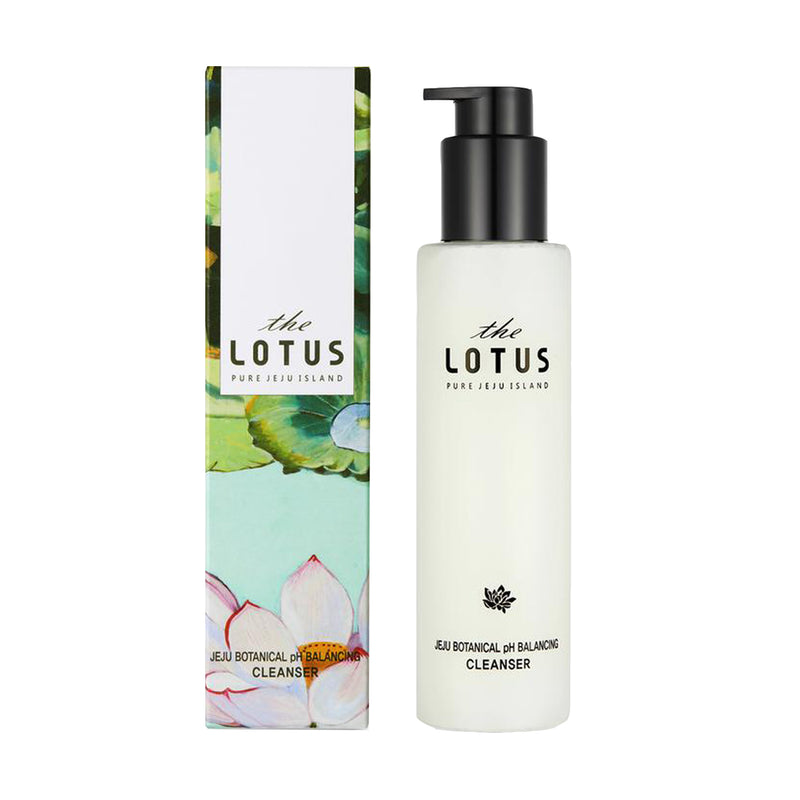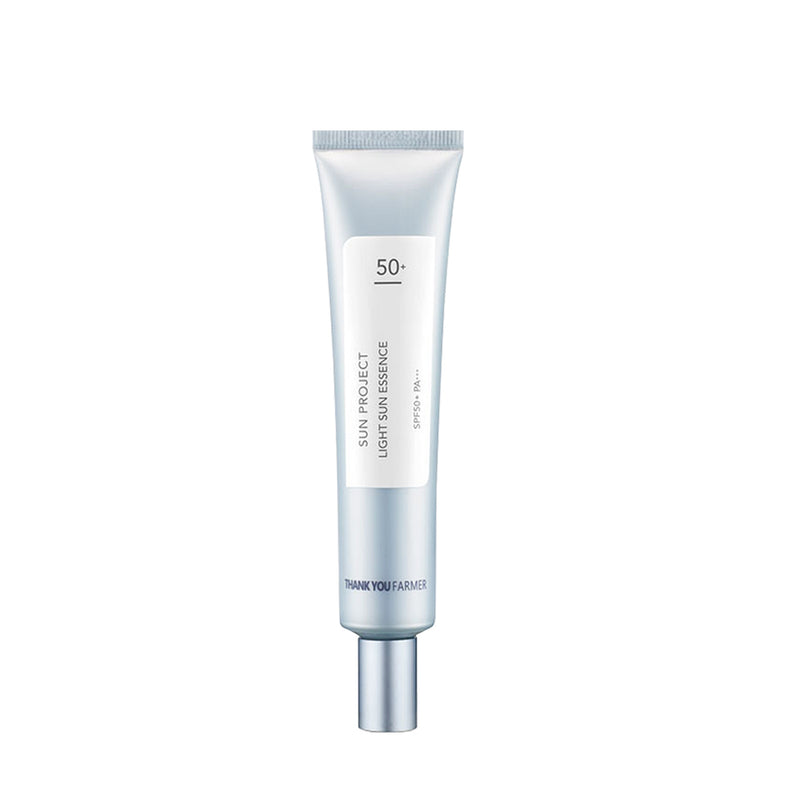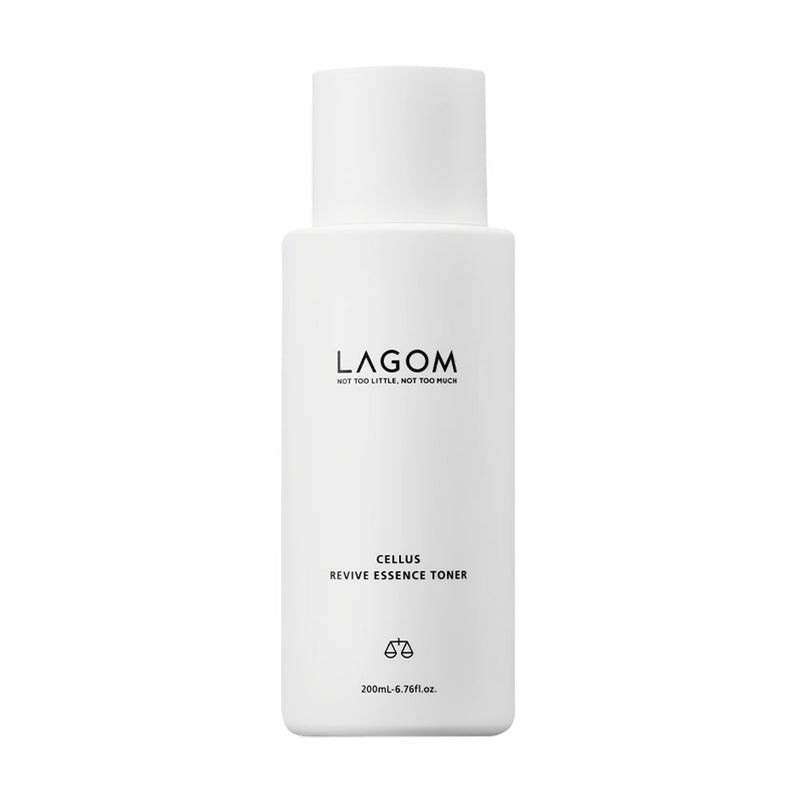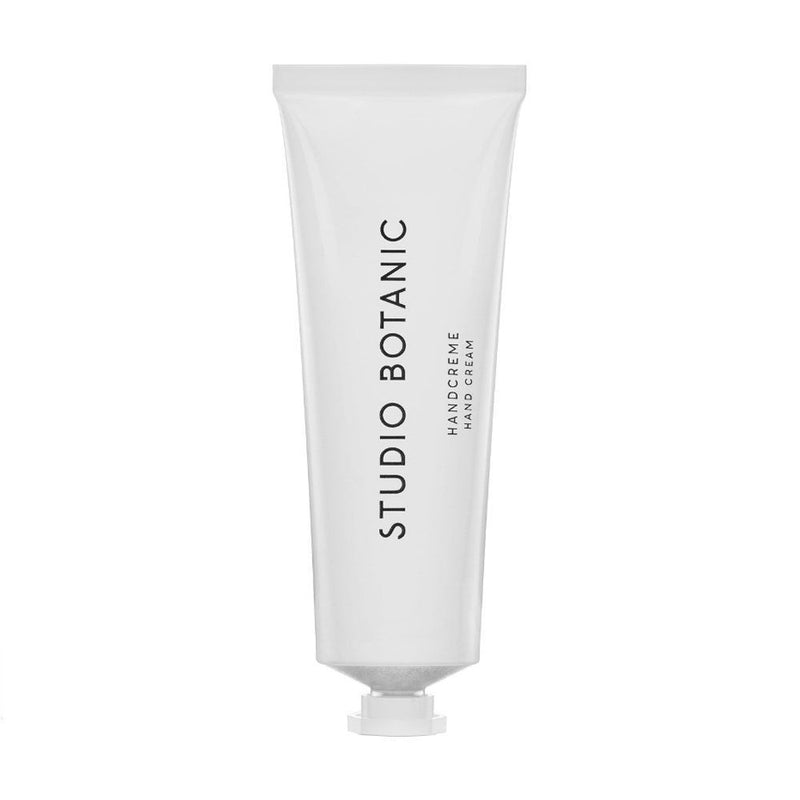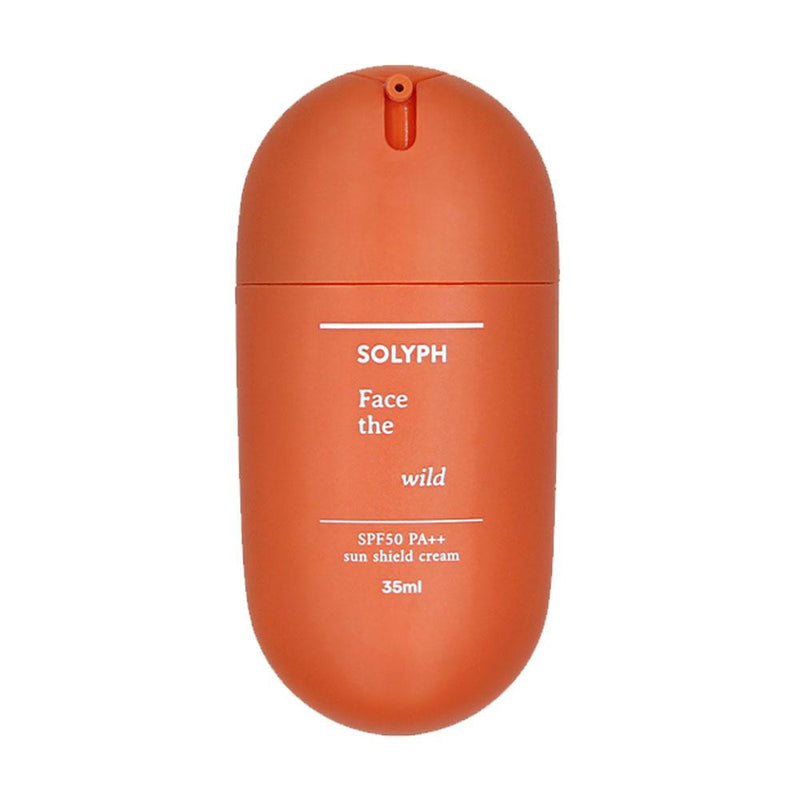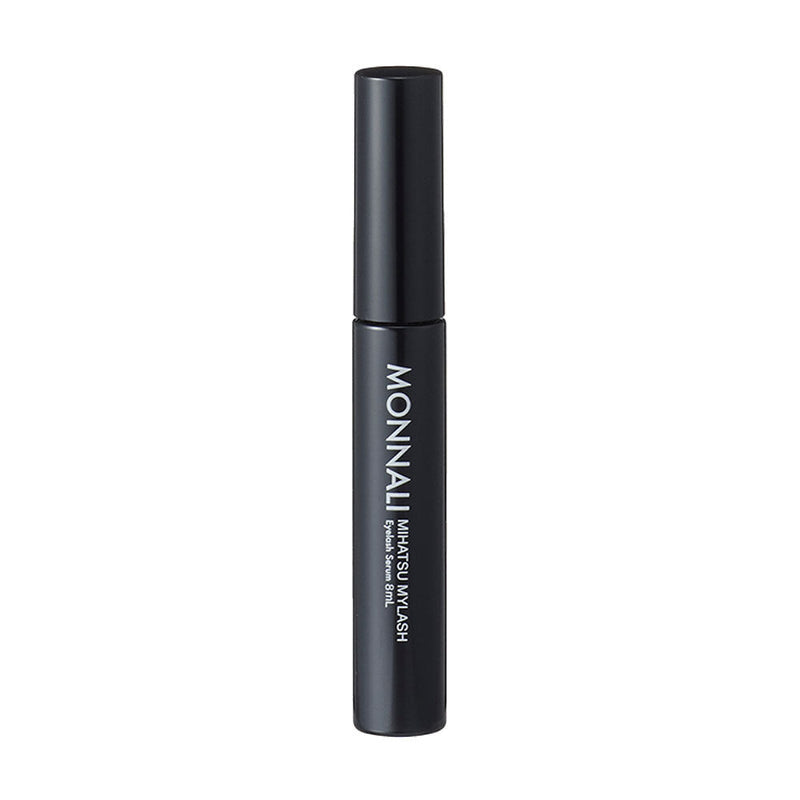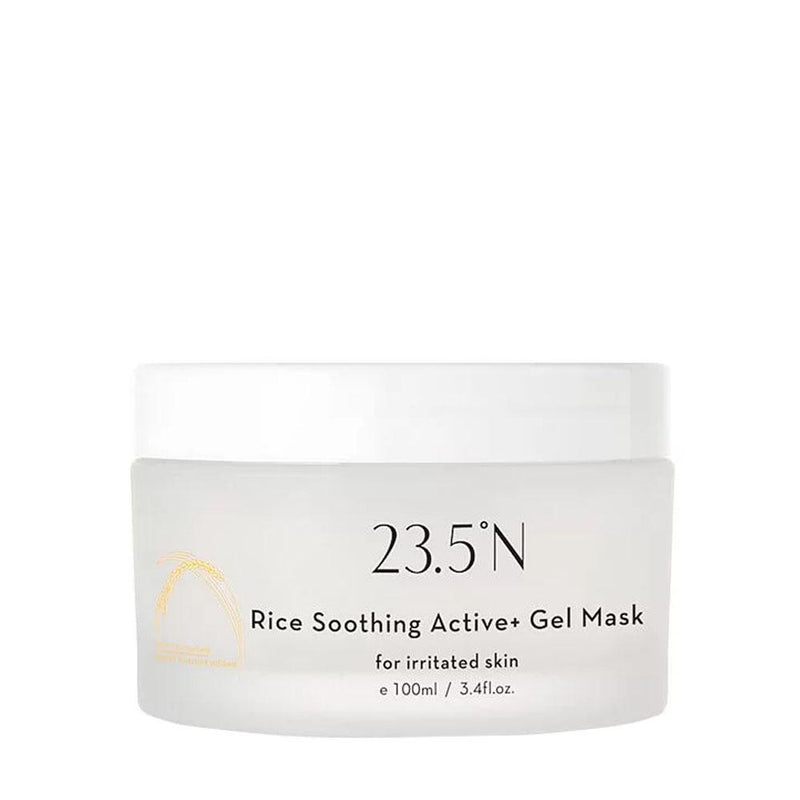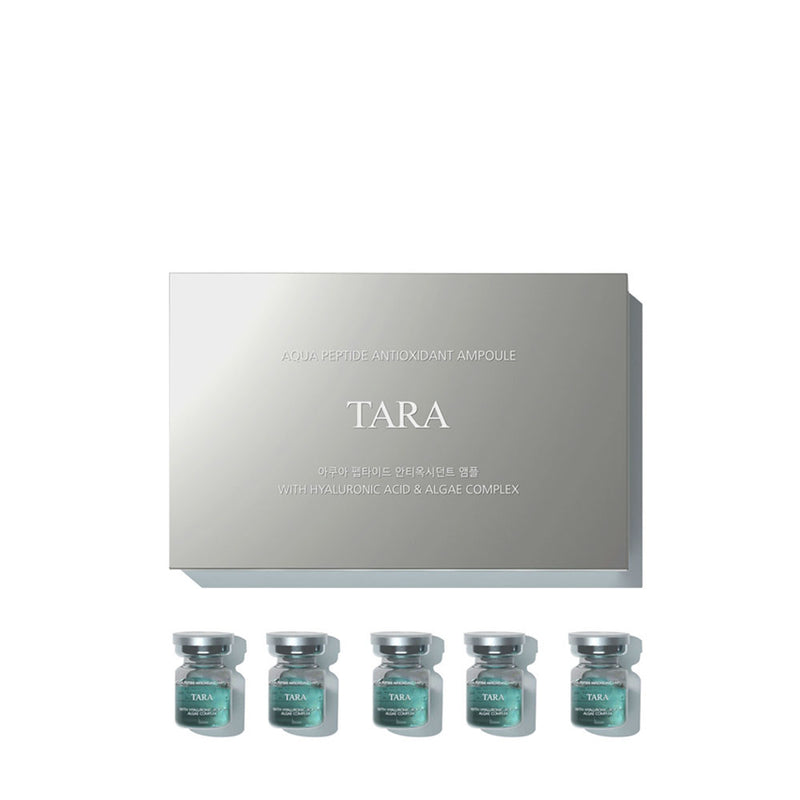If you’ve ever noticed breakouts on your back, shoulders, or chest, you’re not alone. Body acne is a common skin issue that affects people of all ages, especially in hot and humid climates like Singapore. While many are familiar with facial acne, body acne often flies under the radar, despite being just as uncomfortable and frustrating.
This guide provides an overview of everything you need to know about body acne, including its causes, prevention tips, and effective treatments. Whether you're a student, a working adult, or someone who enjoys the great outdoors, this guide is for you.

What Is Body Acne?
Body acne is just what it sounds like - breakouts that pop up on areas like your back (often called “bacne”), chest, shoulders, and even your buttocks. It can take many forms like whiteheads, blackheads, small red bumps (papules), or even deeper, painful pimples and cysts. While it shares many similarities with facial acne, body acne often covers larger surface areas and can sometimes be more persistent or inflamed.
The skin on your body, especially on the back, is thicker (than the face) and has larger pores, which means it can produce more oil and trap more sweat, dead skin cells, and bacteria, perfect conditions for breakouts. Furthermore, body areas are more likely to experience constant friction from clothing, backpacks, and even workout gear, which can irritate the skin and worsen acne.
Unlike facial acne, which is often driven by hormones (especially in teens and women), body acne is typically triggered by external or lifestyle-related factors. Think: living in hot, humid climates (like Singapore), wearing sweaty or tight-fitting clothes, using pore-clogging body products, not showering after exercise, or even certain dietary habits.
In short, body acne is common, but it’s also treatable once you understand what’s causing it.
Body Acne in Teenagers vs. Adults
Body acne affects teenagers and adults in different ways and knowing the difference can help you in figuring out what actually works. From causes to treatment response, these differences matter when it comes to getting clearer skin. We explore the key differences here.
Teenagers
For teens, body acne is usually a rite of passage thanks to puberty. As hormone levels (especially androgens) surge, oil glands kick into high gear, leading to a higher chance of clogged pores and breakouts.
- Main Trigger: Hormonal changes from puberty.
- Where It Shows Up: Most commonly on the back ("bacne") and chest, where oil glands are most active.Often a mix of blackheads, whiteheads, and inflamed pimples. It can range from mild to severe depending on lifestyle and genetics.
- Who it affects: Pretty much everyone, but sweat from sports and other outdoor activities, poor hygiene, and chafing from heavy backpacks can exacerbate the severity.
Pro Tip: Teenage body acne usually responds well to over-the-counter treatments with ingredients like salicylic acid or benzoyl peroxide, especially when paired with a consistent skincare routine.

Adults
Adult body acne is a different beast altogether. It’s often less about puberty and more about stress, fluctuating hormones, lifestyle and environmental factors, and sometimes, even the products you're using.
- Main Triggers: Hormonal imbalances (especially around the menstrual cycle), chronic stress, poor sleep, and irritating or pore-clogging skincare/body products.
- Where It Shows Up: Still common on the back and chest, but can also appear on the buttocks and shoulders. Breakouts tend to be deeper and more inflamed, like painful cysts or nodules.
- Who It Affects: More common in women, often linked to estrogen and progesterone changes from menstruation, pregnancy, or conditions like Polycystic Ovary Syndrome (PCOS).
Pro Tip: Adult body acne may not always respond to drugstore products. Prescription treatments such as topical retinoids, hormonal therapy (e.g. birth control pills or spironolactone), or antibiotics are often needed for long-term results.
Recognising the difference between teenage and adult body acne helps you target the root causes and not just the symptoms. Whether it’s switching up your products, managing stress, or talking to a dermatologist about your hormones, the right approach depends on your skin and what stage of life you’re in.
Types of Body Acne and Their Causes
Just like facial acne, body acne doesn’t look the same for everyone varying in form and severity. At the same time, where the acne appears on your body is very often influenced by localised conditions such as sweat, pressure, and friction.
Understanding the different types and the factors that may be causing the acne in a specific area can help you figure out what you’re dealing with and choose the right treatment or management plan to help you achieve clean and clear skin.
Common Types of Body Acne
- Blackheads. These are open comedones, formed when pores become clogged with dead skin cells and excess oil. The black color is due to oxidation, not dirt.
- Whiteheads. Also known as closed comedones, these occur when a pore is clogged with oil and dead skin cells but remains closed at the surface, forming a small, flesh-colored bump.
- Papules. Small, red, inflamed bumps that are often tender to the touch. They form when pore walls break down due to inflammation.
- Pustules. Similar to papules but filled with white or yellow pus. These bumps are typically inflamed and can become irritated by friction or picking.
- Nodules and Cysts. Severe forms of acne. Nodules are hard, painful lumps deep under the skin, while cysts are softer, pus-filled lesions. Both can cause scarring and often require medical treatment.

Body-Part Specific Acne
- Shoulders and Upper Arms. These areas are prone to Acne Mechanica, a type of acne caused by friction or pressure from backpack straps, tight clothing, or gym bags. Sweat and heat can exacerbate the condition, especially during workouts.
- Chest. Acne on the chest often results from trapped sweat and oil under tight or synthetic fabrics, especially during hot weather or intense physical activity. Hormonal fluctuations and skincare products that clog pores (comedogenic) can also contribute.
- Back ("Bacne"). The back has a high concentration of oil glands, making it particularly susceptible to clogged pores. Acne here can result from sweat, oil buildup, and friction from lying on hard surfaces or wearing heavy gear like sports pads, braces or backpacks. Poor hygiene or residue from hair products can also play a role.
- Buttocks. Breakouts on the buttocks are usually due to folliculitis, an inflammation or infection of hair follicles caused by bacteria, yeast, or irritation. It may resemble acne but often stems from prolonged sitting, tight clothing, or poor hygiene, rather than clogged pores.
How Can Hormones Affect Body Acne?
Hormones can also play a significant role in triggering or worsening body acne. The primary culprit is Androgens, male hormones found in both men and women. Androgens stimulate the sebaceous (oil) glands to produce more sebum.
When excess oil combines with dirt and dead skin cells, it can clog pores and lead to acne breakouts. Hormonal shifts can also increase inflammation and influence skin cell turnover, both of which can contribute to acne formation and the healing process.
Hormonal Triggers
- Puberty. During adolescence, rising levels of androgens like testosterone cause sebaceous glands to enlarge and become more active. This is a major reason why teens often develop acne not only on the face but also on the chest, back, and shoulders.
- Menstrual Cycle or Polycystic Ovary Syndrome (PCOS). Fluctuations in estrogen and progesterone throughout the menstrual cycle can cause acne flareups, particularly in the days leading up to menstruation. Women with PCOS often experience persistent acne due to elevated androgen levels, which can affect the face as well as the body. This type of acne is typically deeper, more cystic, and harder to treat with over-the-counter products alone.
- Stress. Chronic or acute stress increases the production of cortisol, a hormone that can indirectly lead to higher androgen activity. This hormonal response can cause a spike in oil production and inflammation, contributing to breakouts on the body, particularly in areas where sweat and friction are common.
- Pregnancy and Postpartum. Hormonal changes during pregnancy can cause unpredictable acne patterns - some people see improvement, while others experience new or worsened body breakouts. After childbirth, hormone levels rapidly shift again, which may lead to postpartum acne.
- Hormonal Medications and Birth Control. Some hormonal contraceptives can help regulate acne by balancing hormone levels, while others, especially those with higher androgenic activity, may make it worse. Similarly, starting or stopping hormone-based treatments like testosterone therapy or certain steroids, can trigger body acne in some individuals.
If your body acne seems to flare up during certain times of the month, under stress, or in connection with medical conditions like PCOS, hormones may be a key contributor. In these cases, addressing the hormonal imbalance through targeted treatments such as prescription topicals, oral medications, or hormonal therapy may be necessary for long-term management.
Why Body Acne Gets Worse in Humid Tropical Weather
If you live in Singapore or any other tropical climates, then you're no stranger to the sticky heat and never-ending sweat. If your skin seems to break out more often here, you’re definitely not imagining it. Tropical climates create the perfect conditions for body acne to flare up. Here’s what you need to know:
- Increased Sweating. Hot and humid weather causes your body to sweat almost constantly, especially if you’re outdoors or lead active lifestyles. Sweat itself isn’t the enemy, but when it mixes with oil, dead skin cells, and bacteria, it can clog pores fast, especially on your back, chest, and shoulders. And if you’re wearing tight or non-breathable clothing? That just traps everything in, making it even worse.
- Bacterial Growth. Humidity and warmth creates the perfect playground for acne-causing bacteria, particularly Cutibacterium Acnes, the main culprit behind inflammatory breakouts. In tropical climates, your skin stays moist for longer periods, giving bacteria the ideal environment to multiply and trigger infections in clogged pores.
- Increased Oil Production. Your skin naturally produces more sebum in hot, humid environments to help cool down the body. The excess oil increases the chances of blocked pores and breakouts and for those with oily or acne-prone skin, this can tip the balance from manageable to messy fast.
- UV Exposure. Living in equatorial regions like Singapore means stronger UV exposure year-round. While a bit of sun might seem like it "dries out" pimples at first, UV rays actually damage the skin barrier, cause inflammation, and can worsen acne in the long run. Plus, sunburned skin tends to peel, adding another layer of dead skin cells that can clog pores.
If you live in a humid or equatorial climate, management and prevention is key. Showering promptly after sweating, wearing breathable fabrics, using lightweight, non-comedogenic skincare products, and applying a non-greasy sunscreen can all help. Exfoliating gently a few times a week also goes a long way in keeping pores clear.

Lifestyle Habits That Can Contribute to Body Acne
You may not be aware of it but daily habits and routines might also be worsening your body acne without you even realising it. The good news? Once you know what’s causing it, a few simple, smart changes can make a big difference. Let’s break down some more common lifestyle triggers.
Active, Outdoorsy Lifestyle
Love hiking, running, or hitting the gym? An active lifestyle is great for your health but all that movement builds up sweat, dirt, and bacteria on your skin. When you stay active in hot or humid environments, your pores are working overtime to keep you cool. But if sweat dries on your skin or gets trapped under gear or clothes, it mixes with oil and dead skin cells, setting the stage for clogged pores and breakouts.
Pro Tip: Always carry a clean towel to blot off sweat, and try using gentle body wipes post-activity if you can’t shower right away. Using a dedicated skincare line for active lifestyles can also help.
Tight or Synthetic Clothing
Leggings, compression wear, briefs and sports bras - these are all wardrobe staples for workouts, but many are made of materials like polyester and nylon that trap heat and moisture against your skin. This combo creates the perfect breeding ground for acne-causing bacteria.
Pro Tip: Opt for loose-fitting, breathable fabrics like cotton or moisture-wicking athletic wear that draws sweat away from your skin. And always change out of damp clothes ASAP!
Not Showering After Exercise
We get it, our schedule can sometimes be too packed to jump straight into a shower. But letting sweat linger on your skin allows bacteria to grow and dead skin to pile up, especially on the back, chest, and shoulders. If you throw sweaty clothes back on later, you're basically pressing all that grime right back into your pores.
Pro Tip: Make post-workout showers non-negotiable. Even a quick rinse with a gentle acne-fighting body wash (look for ingredients like benzoyl peroxide or tea tree oil) can make a big difference.
Backpacks, Sports Gear, and Chafing
Anything that creates repeated pressure or friction like backpacks, straps, tight waistbands, or sports pads, can trigger Acne Mechanica, a type of breakout caused by rubbing and irritation rather than bacteria alone. This is especially common in athletes, hikers or students carrying heavy bags.
Pro Tip: Minimise friction where you can. Use padded straps, alternate shoulders when carrying bags, and keep the skin clean and dry under gear. If breakouts are persistent, apply a protective layer of non-comedogenic barrier cream before putting on equipment.
These habits might seem harmless, they can even be considered positive but they can quietly contribute to persistent body acne. The good news? Small changes to your routine and a little attention to what your skin is trying to tell you can go a long way in getting things under control.

Body Acne Myths vs. Facts
When it comes to managing body acne there are many myths around body acne that can lead to confusion and ineffective treatments. Being able to differentiate between fact and fiction will help you avoid some of the common pitfalls. Here we bust a few of the more common ones:
Myth #1: Body acne means you're dirty.
Fact: Acne isn’t about hygiene, it’s about clogged pores, hormones, oil, and bacteria. Over-washing can actually make things worse by drying out and irritating your skin.
Myth #2: Only teenagers get body acne.
Fact: Adults get it too, especially women, thanks to hormones, stress, and lifestyle factors. If you're breaking out in your 30s or 40s, it is totally normal and nothing to be embarrassed about.
Myth #3: You should scrub body acne hard to “clean it out.”
Fact: Harsh scrubbing can irritate the skin, damage the barrier, and make acne worse. Gentle exfoliation 1 to 3 times a week is plenty. Choose chemical exfoliants like salicylic acid instead of rough scrubs.
Myth #4: Sun exposure clears up acne.
Fact: The sun may temporarily dry out pimples but UV damage actually leads to more inflammation, clogged pores, and sometimes dark spots or scarring. Always wear non-comedogenic sunscreen.
Myth #5: Sweat causes acne.
Fact: Sweat itself isn’t the problem, it’s when it sits on your skin too long. Mix that with tight clothes, bacteria, and oil? That’s when breakouts happen. Showering after workouts helps a lot.
Myth #6: You can treat body acne the same way you treat face acne.
Fact: Body skin is thicker and may need stronger formulations (like higher strength benzoyl peroxide or salicylic acid). But just like your face, it still needs consistent care and moisture.
Myth #7: Acne will just go away on its own.
Fact: Mild cases might fade, but chronic or hormonal acne usually sticks around without the right treatment. Ignoring it can lead to scarring, so it’s better to deal with it early.
The Link Between Diet and Body Acne
What you eat can also show up on your skin, including your back, chest, and shoulders. While everyone’s skin reacts a little differently, there are some well-known food culprits that can make your skin more susceptible to breakouts on both your face and body. Here are a few types of foods that might be causing your latest breakout:
High-Glycemic Foods
Think white bread, sugary cereals, pastries, soda, anything that causes a rapid spike in blood sugar. These foods raise insulin levels that can trigger excess oil production and inflammation, leading to clogged pores and breakouts on both your face and body.
Dairy Products
Milk, cheese, ice cream - yep, these can be sneaky triggers for some people. Dairy may influence hormone levels (especially insulin-like growth factor 1 or IGF-1), which can throw your skin’s oil production off balance. Not everyone reacts to dairy, but if you suspect it’s affecting your skin, try cutting back for a few weeks and see what happens.
Processed and Junk Foods
Chips, fried snacks, fast food, and foods high in trans fats and preservatives can create systemic inflammation. This type of low-grade, chronic inflammation can show up on your skin in the form of breakouts, especially on the body where sweat and oil are already working against you.

Emerging research also suggests that your gut and skin are more connected than you might think. When your gut’s out of balance, it can lead to inflammation that shows up as breakouts and yes, even on your body. Adding probiotics like yogurt or kimchi, and fibre-rich foods can help restore that balance.
Focus on skin-friendly nutrients like zinc, vitamin A, antioxidants, and omega-3s commonly found in foods like leafy greens, nuts, berries, and fatty fish. And don’t forget water! Staying hydrated is an often-recommended step in keeping your skin healthy and clear.
No, you don’t need to follow a perfect diet, but making smart, consistent choices can go a long way in calming body acne and keeping your skin in check.
Scarring, Hyperpigmentation, and Other Lasting Effects of Body Acne
Body acne isn’t just annoying in the moment, it can also leave behind stubborn reminders that stick around long after the breakout clears. And if you’re not careful, those marks can become harder to treat over time. Let’s break it down:
Types of Aftereffects
- Hyperpigmentation. These are the dark spots or patches that show up after a pimple heals. They’re not scars, but they can last for months, especially if you pick at your acne or skip sunscreen. Hyperpigmentation is more common and more noticeable in medium to deep skin tones due to higher melanin levels but can occur in all skin types and tones.
- Scars. Usually, the result is from repeated trauma to the skin or when the body over- or under-produces collagen during healing. More serious breakouts that involve cystic or inflamed acne can eventually lead to permanent scarring. These can be either depressed (atrophic) scars - small dips or indentations in the skin - or raised (hypertrophic or keloid) scars - thick, bumpy tissue that forms where the acne was.
- Textural Changes. Sometimes the skin feels rough or uneven even if there’s no visible scar or dark mark. This can happen from prolonged inflammation or repeated breakouts in the same area.

What Helps
- Topical Treatments. Products with retinoids (like adapalene), azelaic acid, niacinamide, or vitamin C can help fade dark spots, boost skin turnover, and even out texture over time. Be patient though, these can take weeks or even months to show real improvement.
- Professional Options. For deeper or more stubborn marks, treatments like chemical peels, microneedling, microdermabrasion, or laser therapy can resurface the skin and reduce scarring. Always consult a dermatologist for the right match based on your skin type and concerns.
- Sun Protection. SPF shouldn’t be optional. UV exposure can make dark spots darker and slow down the fading process. A broad-spectrum sunscreen (at least SPF 30) is essential, even for areas like your back or shoulders.
Regardless of whether it's dark spots or scarring, it’s important to start early because the longer you wait to treat, the harder they are to fade. Also stay consistent, many over-the-counter skin treatments take time to work, and don’t pick at it! Your future self (and your skin) will thank you.
Body Acne Prevention Tips (How to Prevent Body Acne)
Prevention is always better than the cure, as the adage goes, and this certainly also applies to body acne. Preventing body acne is often a lot easier and less frustrating than treating it once it flares up. With a few smart habits and the choosing the right products, you can keep breakouts at bay before they even have a chance to start.
Maintain Good Hygiene
- Shower ASAP after sweating - whether it’s a workout, humid weather, or a long commute. Good hygiene habits are key and letting sweat and oil sit on your skin for too long is a recipe for clogged pores.
- Use a body wash with acne-fighting ingredients like salicylic acid (exfoliates pores) or benzoyl peroxide (kills bacteria). Choose one that’s pH-balanced and gentle - no harsh scrubbing needed.
- Ditch harsh shower gels and bar soaps that can strip your skin’s natural oils and cause a rebound oil production. A good liquid cleanser or a gentle daily exfoliator is more effective and skin-friendly.
Choose the Right Clothing
- Wear moisture-wicking and breathable fabrics during workouts or in hot climates. Materials like polyester blends or technical athletic wear help keep sweat off your skin.
- Avoid tight, non-breathable clothes like spandex or synthetic blends that trap heat, sweat, and bacteria against your skin. Some examples include leotards, cycling tights, yoga pants.
- Wash your clothes, towels, and pillowcases often. Dirt, oil, and dead skin cells collect much faster than you think, especially in humid equatorial climates like Singapore. Use mild, fragrance-free detergent to avoid irritation.
Be Smart With Skincare and Haircare
- Go non-comedogenic with everything - lotions, sunscreens, even body oils. If it touches your skin, it should be acne-safe.
- Watch out for hair products. Conditioners, leave-ins, and oils can drip down your back and clog pores. Always rinse thoroughly, and tie up long hair if needed.
- Exfoliate regularly but gently. Once or twice a week with a soft cloth, silicone brush, or a chemical exfoliant (like AHAs or BHAs) helps keep pores clear without overdoing it.
Manage Sweat and Friction
- Use body powder or antiperspirant, even on areas like your lower back or underarms to reduce moisture buildup.
- Avoid sitting in damp workout clothes. Change and rinse off quickly, especially after intense activity.
- Minimize skin friction from backpacks, tight straps, or sports gear. The combination of friction and sweat can irritate, causing Acne Mechanica.
Body Acne Treatment Options (How to Treat Body Acne)
If prevention alone isn’t cutting it, don’t stress, there are plenty of effective treatments that can help clear things up. From drugstore solutions to dermatologist-prescribed meds, the right approach depends on how stubborn your body acne is and what your skin responds to best.
Over-the-Counter Treatments
These are usually your first line of attack and they work reasonably well for mild to moderate body acne. You can easily get many of these products online or in drugstores, here are some of the ingredients to look out for:
- Salicylic Acid (BHA). A gentle chemical exfoliant that penetrates deep into pores to clear out oil, sweat, and dead skin cells. Great for blackheads and whiteheads on the back, chest, and shoulders.
- Benzoyl Peroxide. A powerhouse ingredient that kills acne-causing bacteria (like Cutibacterium Acnes) and calms inflammation. Use it carefully though, it can bleach fabrics, so stick with white towels and sheets.
-
Alpha Hydroxy Acids (AHAs). Ingredients like glycolic acid and lactic acid help resurface skin, smooth out texture, and fade leftover dark marks. AHAs don’t go as deep as BHAs, but they’re perfect for improving skin tone and overall clarity.
- Medicated Body Washes
Switching out your regular body wash is an easy step to take but can make a big difference. Look for products labeled “acne body wash” with at least 2% Salicylic Acid - for daily pore-clearing action - and 5 to 10% Benzoyl Peroxide - for targeting inflammatory acne.
Use a soft washcloth or silicone brush to gently massage it into breakout-prone areas. Let it sit for a minute or two before rinsing for maximum effect.
Spot Treatments
For those angry, isolated flare-ups:
- Use targeted gels or creams with benzoyl peroxide, salicylic acid, or sulfur.
- Make sure the formula is strong enough for body skin, which is thicker and tougher than your face.
- Apply after showering, once the skin is clean and dry.
Pro Tip: Some people even use facial acne patches on body breakouts, just make sure they’re large enough to stick well.
Prescription Medications
If your acne is painful, cystic, or just won’t go away despite your best efforts, it’s time to talk to a dermatologist for a prescription. Depending on the type and severity of your body acne, they may recommend:
- Topical Retinoids (like tretinoin or adapalene). This can encourage faster skin turnover and help unclog pores.
- Oral Antibiotics. Antibiotics like Doxycline and Erythromycin can temporarily reduce inflammation and bacterial overgrowth.
- Hormonal Therapy. For women, birth control pills or anti-androgens such as spironolactone can help balance hormone-related acne triggers.
- Isotretinoin (Accutane). For the most severe, scarring types of body acne, this is usually a last-resort option but very effective when monitored properly.

When Should You See a Doctor?
Let’s be real, sometimes body acne needs more than just over-the-counter fixes. If you’ve been trying to handle it on your own but aren’t seeing progress, it might be time to bring in the pros. A dermatologist can help figure out what’s really going on and set you up with treatments that work faster and more effectively.
Here are some signs it’s time to book that appointment:
- No improvement after 8 to 12 weeks of consistent treatment. You’ve tried all the right things, cleansing properly, using salicylic acid, switching to breathable clothing, but the breakouts just won’t let up. That’s a clear sign you may need something stronger, like prescription meds or a custom treatment plan.
- Pain, swelling, or signs of infection. If your acne feels tender, hot, or looks red and swollen, it could be inflamed or even infected. Popping or picking can make it worse. See a doctor before it escalates into something more serious like a boil or abscess.
- Acne is leaving behind deep scars or stubborn dark spots. Early treatment can help prevent long-term damage. If you're starting to see pitted scars, raised bumps, or hyperpigmentation that lingers, a dermatologist can help minimize the marks before they become permanent.
- It’s affecting your confidence or daily life. Whether you’re skipping the gym, covering up at the beach, or feeling self-conscious in your own skin, it’s worth getting help. Body acne doesn’t just show up on your skin, it can also impact how you feel and your sense of mental well-being.
- You’re not sure it’s actually acne. Not all breakouts are caused by acne. Skin issues like fungal folliculitis, keratosis pilaris, or even heat rash can look similar but need completely different treatments. A dermatologist can correctly diagnose what’s going on and steer you in the right direction.
If your body acne is stubborn, painful, or just making life harder than it needs to be, don’t wait. Getting expert advice can save you time, money, and frustration in the long run, and get you back to feeling comfortable in your skin sooner.

Final Tips and Thoughts
Dealing with body acne can be frustrating, but it’s completely manageable. With the right habits, products, and treatments, you can reduce breakouts, achieve clearer skin, and feel more confident.
Start with small lifestyle tweaks like showering after workouts, wearing breathable fabrics, and using products with proven ingredients such as salicylic acid or benzoyl peroxide. Be gentle with your skin and avoid over-scrubbing or using harsh soaps that can make things worse.
If over-the-counter treatments aren’t doing the trick, it might be time to see a dermatologist for more targeted options like prescription meds, hormonal support, or treatments for scarring. It also helps to look at potential triggers like stress, diet, climate, or even your skincare routine to better understand what your skin needs and why breakouts might be happening.
At the end of the day, acne shouldn’t define you but feeling good in your skin does matter. Give your skin a little patience and the right support, and you’ll be well on your way to healthier, more confident skin. No stress, no shame. You’ve got this.
